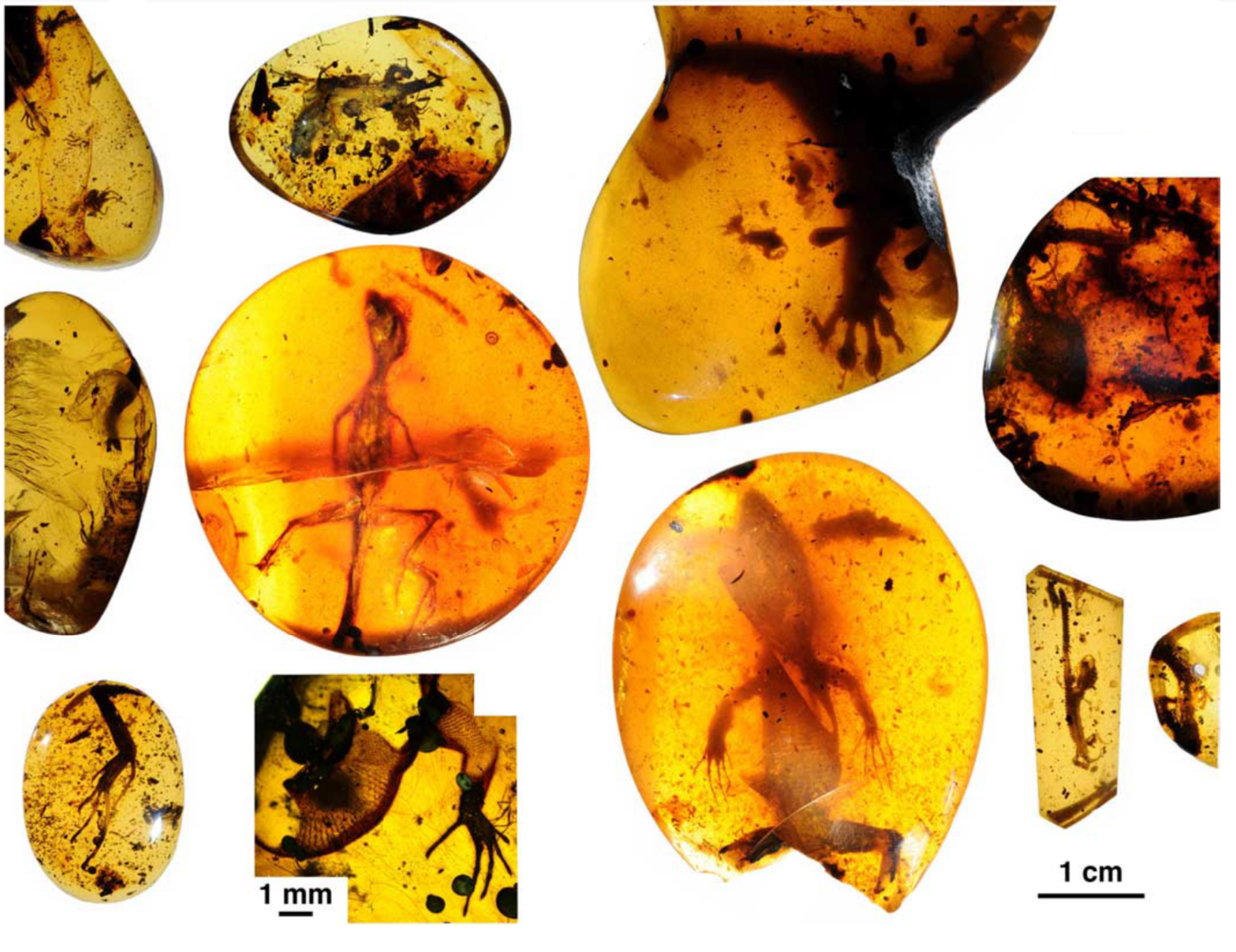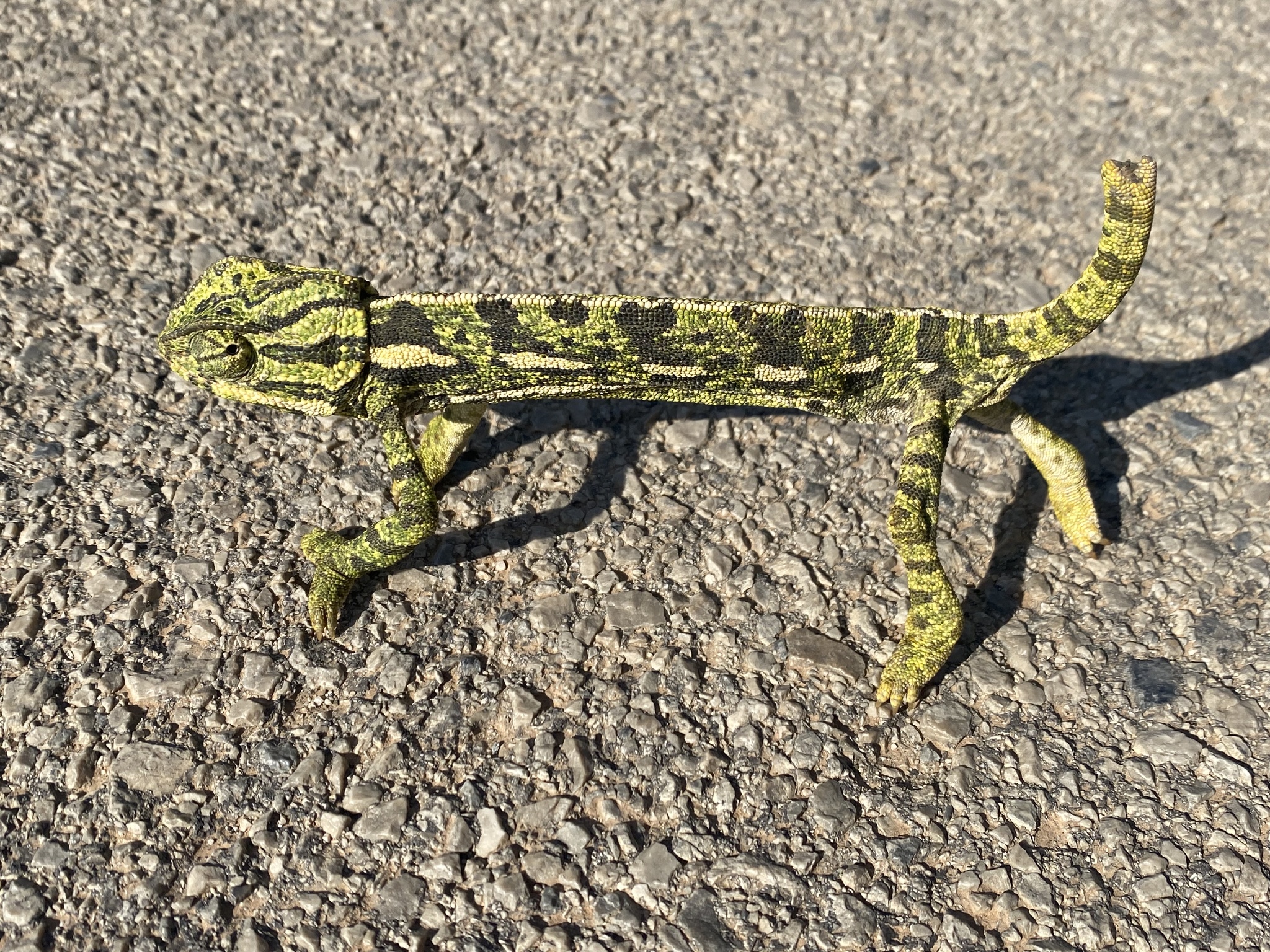The oldest chameleon in the world comes from Myanmar. More precisely, it was discovered by chance. Myanmar has had commercial amber mines from the Cretaceous period for over a century – probably the only country in the world to do so. The most productive mines of this amber, known as “Burmite”, are located in the Hukawng valley in Kachin in northern Myanmar. These mainly supply the Chinese market, but some are also sold directly to interested private individuals. For years, scientists have repeatedly made highly interesting palaeontological finds among the amber sold.
The chameleon in question, along with other fossils encased in amber, was sold to jewellers who cut the stones into cabochons, a type of gemstone. From there, the pieces were sold to private individuals, including James Zigras and Scott Anderson, private collectors. Scientists were allowed to analyse the ambers and put them in a CT scanner, among other things. It turned out that the little chameleon must have been a juvenile. Almost the entire skeleton and almost the entire skin are preserved. It is only 10.6 mm long and the claws in particular are very well preserved. The overall habitus of the animal suggests that it was a chameleon, only the teeth and the arrangement of the fingers and toes do not quite match today’s chameleons. It is now assumed that this chameleon is over 99 million years old and has been in amber for this long. Of course, it is not a species of chameleon that exists today, but it is a relative. It is called a “protochameleon”, which means it is a precursor to our modern chameleons. In the picture above, the chameleon can be seen at the bottom right, in the amber measuring 1 cm below. This amber is still in a private collection and not in a museum.
…to clarify another question that you have probably asked yourself, but which has not yet been answered: As far as we know, Parson’s Chameleons from Madagascar are the oldest of all chameleons. Individual males that are over 20 years old are known from herpetoculture.
#show your colours #internationalchameleonday #chameleonday #chameleondayMay9 #agchamaeleons
Photo: Various fossils in amber, source: Juan D. Daza, Edward L. Stanley, Philipp Wagner, Aaron M. Bauer, David A. Grimald; Mid-Cretaceous amber fossils illuminate the pastdiversity of tropical lizards, Download
Addendum: Unfortunately, it has since emerged that the little creature in the amber is not a chameleon at all. The oldest chameleon is therefore not from Myanmar after all!



